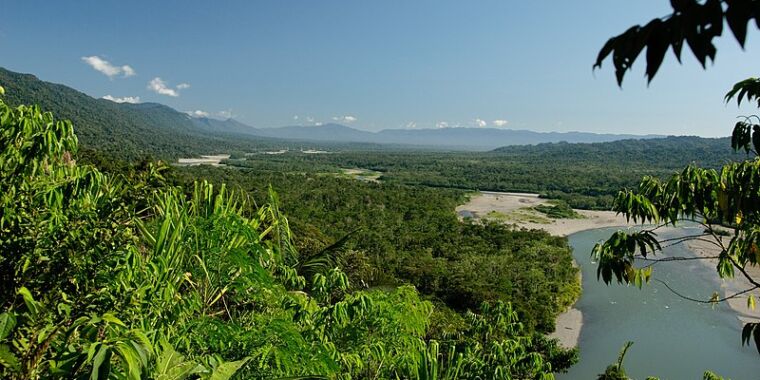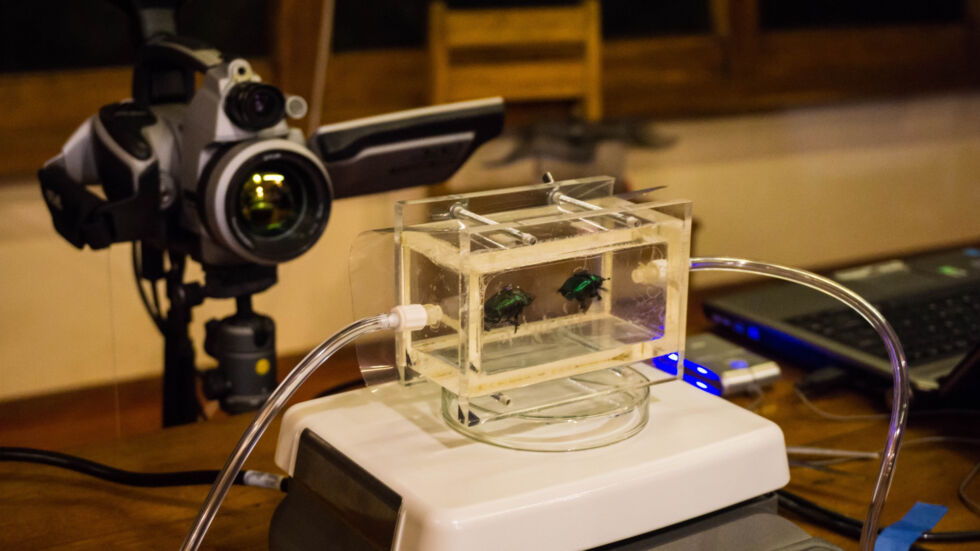

Peru’s Manu Biosphere Reserve is the most important rainforest reserve on the earth and some of the biodiverse spots on the planet. Manu is a UNESCO-protected space the dimensions of Connecticut and Delaware mixed, protecting an space the place the Amazon River Basin meets the Andes Mountain Vary. This mixture varieties a collection of distinctive ecosystems, the place species unknown to science are found yearly. The remoteness of the area has helped protect its biodiversity however provides to the challenges confronted by the scientists who’re drawn to check it.
Trapping wildlife for analysis within the dense jungle is impractical, particularly contemplating the good distances researchers should journey inside Manu, both by way of the forest or on the waterways. It’s an costly proposition that inevitably exposes the trapped animals to some quantity of danger. Trapping uncommon and endangered animals is much more tough and comes with vital dangers to the animal.
Trapping beetles, nonetheless, doesn’t pose the identical challenges. They’re simple to catch, simple to move, and, most significantly, carry the DNA of many animals in and on them. Any animal a biologist may hope to check leaves tracks and droppings within the forest, and the beetles make a dwelling by cleansing that stuff up.
Beetles as DNA collectors
Beetles are plentiful within the rainforest, and the species that Alejandro Lopera-Toro’s workforce research usually are not endangered. The research does imply that the beetles are killed, however general, the impact on the ecosystem is minimal.
In keeping with Peruvian biologist and workforce member Patricia Reyes, “The affect relies on the abundance and reproductive cycle of every species. Decreasing the beetle inhabitants may impact their predators, equivalent to birds, reptiles, and different bugs. The well being of the forest relies on the beetles’ perform to interrupt down natural matter and disperse seeds. Regardless of not having discovered any impact on the ecosystem up to now, we nonetheless restrict what number of particular person beetles we acquire and establish delicate areas the place amassing is prohibited. We promote sustainable strategies of assortment to mitigate attainable impacts sooner or later.”
Getting beetles to do the work of amassing DNA for researchers took some changes. The traps usually used to check beetles trigger the beetles to fall right into a chemical answer, which kills and preserves them till they’re collected. Nonetheless, these traps contaminate the beetle’s abdomen contents, making the DNA unusable. Lopera-Toro’s traps preserve them alive, defending the fragile strands of DNA that the beetles have labored so arduous to gather. He and his workforce additionally exit into the forest to gather reside beetles by hand, rigorously recording the time and place each was collected. Beginning in July 2022, the workforce has been amassing dung beetles throughout Manu’s numerous ecosystems up and down the altitude gradient, from 500 to three,500 meters above sea degree.

Elena Chaboteaux
The Manu Organic Station workforce is utilizing Nanopore expertise to sequence the DNA discovered within the beetles’ stomachs, with the aim of discovering out what animals are represented there. They particularly focused dung beetles as a result of their feeding habits rely upon the feces left by bigger animals. The primary benefit to the Nanopore minION machine is that it may well separate lengthy lengths of DNA on-site. “Lengthy nanopore sequencing reads present enhanced species identification, whereas real-time information evaluation delivers quick entry to outcomes, whether or not within the discipline or within the lab,” in accordance with the Nanopore web site.
Biologist Juliana Morales acknowledges that Nanopore nonetheless has a excessive charge of error, although as this new expertise is refined, that difficulty is frequently lowering. For the needs of the Manu Organic Station workforce, the margin of error is a worth they’re prepared to pay to have gadgets they’ll use within the rainforest. Since they’re not learning one particular species, however relatively constructing a database of the species current within the area, they don’t must get each nucleotide right to have the ability to establish the species. They do, nonetheless, want a strand lengthy sufficient to distinguish between a typical woolly monkey and a yellow-tailed woolly monkey.
Although the researchers favor to sequence DNA on-site with Nanopore minION gadgets, once they have greater than a dozen samples to investigate, they ship them to the College of Guelph in Ontario, Canada. It’s a logistical nightmare to ship samples from the Peruvian jungle to Canada, however Lopera-Toro says it’s value it. “The College of Guelph can course of a whole bunch of DNA samples per day. I’m fortunate if we are able to course of 10 samples a day on the [Manu] lab.”
In the latest batch of 76 samples, they analyzed the abdomen contents of 27 species from 11 genera of beetles. From these 76 samples, they recognized DNA of howler monkeys, spider monkeys, crimson brocket deer, evening monkeys, peccaries, mouse opossum, Rufous-breasted wooden quail, and two species of armadillos. Oddly, the beetles had additionally eaten a couple of dozen species of fruit, and one had consumed pollen from a tropical plant known as syngonium.
The implications might be huge. “The dung beetle that ate the jaguar’s excrement will inform us not solely the DNA of the jaguar but in addition what the jaguar is consuming,” mentioned Lopera-Toro. “If the jaguar kills a peccary and eats 80 % of the peccary, beetles will eat a few of the different 20 %. If a beetle walks over a jaguar print or saliva, there might be traces of jaguar DNA on the beetle. We analyze the abdomen contents and the skin of the beetle. Now we have an countless variety of choices, alternatives, and questions we are able to reply from learning these small bugs. We will see the larger image of what’s taking place within the jungle.”

